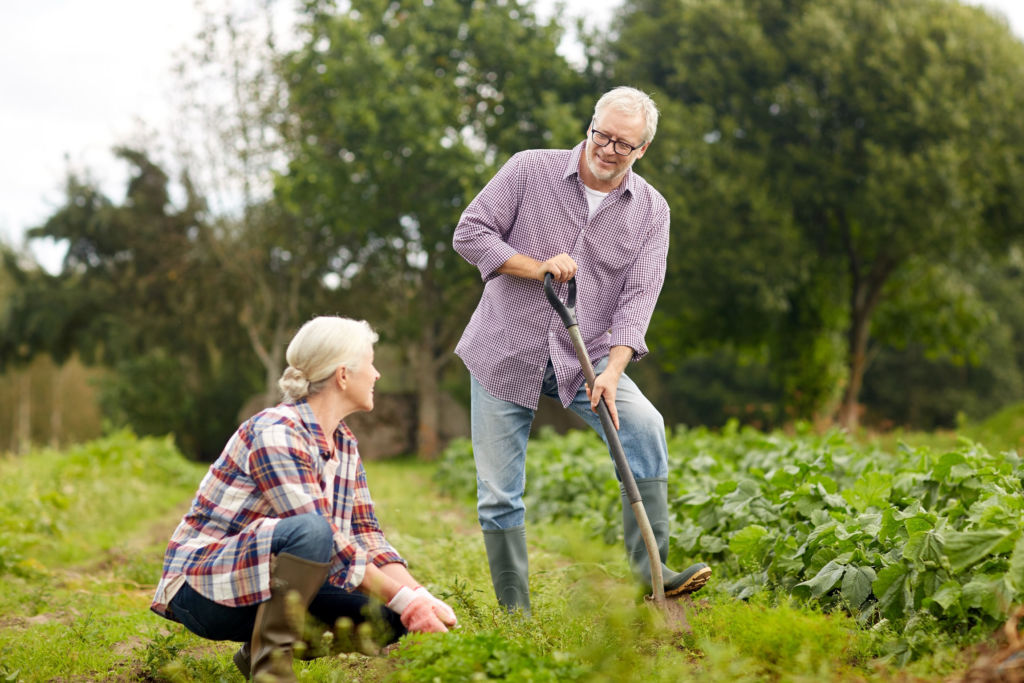It’s that time of the year again. Time to dust off the garden tools and prepare the soil for spring planting. It’s a ritual of sorts, 55% of American households participate in gardening activities, averaging up to five hours weekly. For some, it’s also a time to get back to increasing their overall general activity from a long winter break. But for some, this can also be a difficult transition.
The Royal Society for the Prevention of Accidents (RoSPA) reported that 87,000 gardeners required treatments in a hospital due to injuries in 2006. In 2009 an article titled Gardening? related gardening to rugby, and used terms such as weeder’s wrist, gardeners back, and pruner’s neck. An article in 2010 titled Gardening Riskier than Skiing reported that there were four times as many injuries from gardening than from skiing in Britain.
Bending, lifting, pushing, and pulling can wake up those aches and pains that tend to lay low during the slower activity levels of the winter months, and put us in positions susceptible to injury. But gardening does not have to be harmful to the body. The Cleveland Clinic reported that gardening helps prevent osteoporosis and adds to brain health. An article from Healthline reported that gardening can help fight disease, promote mental health, increase weight loss, and up your vitamin D.
Spring into Yard Work and Gardening
Here are 5 helpful tips to take advantage of the benefits of gardening, while decreasing the risk of injury:
- Warm up your body: stretch your neck, wrist, hands, and legs before jumping right into work.
- Choose the right tools and use proper body mechanics: Tools were made to make life easier and reduce strain on our bodies. Using gardening chairs or stools keeps you out of those prolonged bent-over positions that are hard on your neck and back. And gardening pads take pressure off your knees on those hard soils.
- Bring the plants to you: Use potting tables to work at waist levels.
- Pace yourself: You don’t just decide to run a marathon one day, it takes time to work up to that fitness level. The same motto should be used for any activity. One key is to not do everything in one shot, especially when you are first starting back into the yard. Taking breaks every hour to hour and a half.
- Drink plenty of water: Remember, you’re working and outside. You’re getting the benefits of Vitamin D but staying hydrated keeps tissues more mobile and reduces the risk of injury.
Try these active stretches next time you head out to the yard. Dynamic, or movements to warm up, are the best way to get the body prepared for activity.
- Neck rolls: roll your neck side-to-side 10 times.
- Shoulder rolls: roll your shoulders forward 10 times and backward 10 times.
- Swimmers: move your arms across your body, like a swimmer getting ready to race.
- Standing twists: rotate your body slowly in both directions. No fast motions here! Do 5-10 in each direction
- Leg swings: gently swing your legs back and forth, like a pendulum. Nothing aggressive, just nice and easy.
- Standing squats with calf raises: perform a nice easy squat, and when you come up, perform a calf raise.
After your gardening is finished, try these static stretches to cool down and help relieve any post-work soreness. Long holds are the key to stretching and remember, stretching should never hurt.
- Hamstrings: gently lean forward, reaching for the toes. No bouncing. Try it in a seated position if preferred.
- Hip Stretch: this is a great stretch for both the back and the hips. A seated variation is optional if getting on the ground is too difficult.
- Calf stretch: don’t forget your lower legs. Runners are not the only ones who need to stretch these muscles.
- Cross-arm stretch: Gently pull your arm across your body, hold for 40-60 seconds, then switch sides.
Get outside and keep moving this spring. And strive to take care of your body both before and after working in the yard. Remember, dynamic, or movement stretching pre-activity, and static, or stationary stretching after activity. And if issues arise, don’t wait. Getting to your physical therapist early will help you recover and get back into the yard quicker.

Optimize your health.
As physical therapists, we know the importance of movement for overall health and well-being. Let us help you get the most out of your gardening season.

